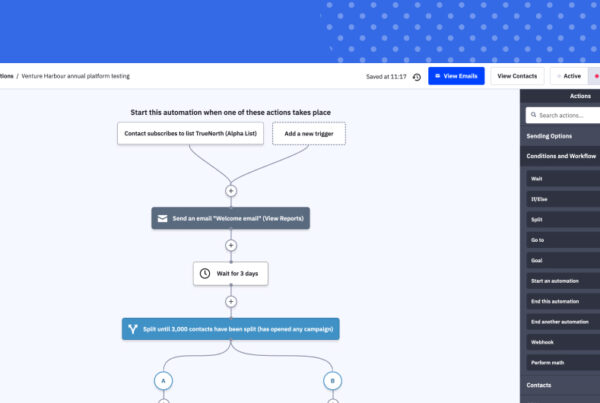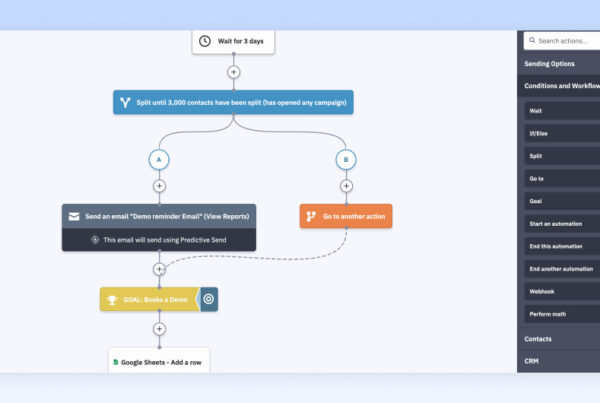A few weeks ago I was helping a client choose a transactional email system to enable them to send invoices, receipts, reminders, and notifications to their users. As the decision was quite time-consuming and required many hours of research, I thought it might be helpful to write up some of my findings so that others didn’t have to spend quite so long getting their head around the different options.
What is a Transactional Email?
A transactional email is an automated system that sends a receipt, invoice, or confirmation when a user completes a certain action. For instance, after purchasing a product and having a confirmation and receipt sent to their email address. Or a password reset link sent when the user requests.
These differ from marketing emails which are aimed at generating leads and conversions.
First things first, there’s no ‘one size fits all’ option
It quickly became clear that there was no obvious winner – all of the transactional email services will do virtually everything that you’ll realistically need, so making an informed choice is about understanding which services do what you need the most better than the others, and of course, there’s the cost.
So, let’s start off by looking at each of their strengths and weaknesses, then we’ll compare the costs, and look at some of the important considerations when choosing an email system.
The Pros and Cons of Transactional Email Service Providers
Out of the fifteen or so popular transactional email services that exist, there are only a few that really bring something unique to the table; Sendinblue, SendGrid, Amazon SES, Mandrill, Mailgun, Mailjet, and Postmark. Most of the other services either lack a compelling value proposition or are just slightly worse / more expensive copycat versions of one of the above.
Brevo – 5/5
Brevo enable you to send up to 9,000 emails/month free of charge (for as long as you like), making it a good platform for startups to start on.
Their pricing remains one of the most cost-effective options as you scale up (unlike services like SendGrid which start off quite affordable but become quite expensive as you scale).
Their user interface is very clean, and in addition to transactional email you can also use Brevo for normal email marketing campaigns, marketing automation, and transactional SMS messages.

While they don’t have the strong brand/reputation of SendGrid or Mandrill, they seem to tick a lot of the boxes when it comes to deliverability, good reporting, fair pricing, and a good overall product.
Their API and documentation are very extensive, and they also have a good variety of integrations and webhooks for getting your app connected.
You can learn more about Brevo here.
Amazon SES (Simple Email Service) – 3/5
When competing on price, it’s hard to beat Amazon. At $0.10 per thousand emails, Amazon SES is extremely cost-effective and scalable. However, the AmazonSES interface is messy to say the least, and playing around with their API can be a real headache. There are a few workarounds that will enable you to get the low cost of Amazon SES without the poor interface. One way is to use a tool like Sendy, which is a self-hosted interface that uses the Amazon SES API to send your emails.

Whether or not this is the best option depends on your budget, coding ability, and patience. While it’s the cheapest option by far, Amazon fall short on their service, features, and support. You can’t use dedicated IP addresses, you are only able to send emails from verified addresses, and the analytics are extremely limited. Consider Amazon SES the bare bones option – if all you need is to get emails into inboxes, and nothing else, this is probably the best way to go.
SendGrid – 3.5/5
SendGrid is arguably the industry leader in the transactional email space. While SendGrid are neither the cheapest nor the most expensive option, what’s attractive about their offering is their incredible email analytics, 24/7 live support, easy integration with a dead simple API, and their reputation for having good deliverability rates.

While other options performed better in certain areas, SendGrid have a good overall balance of important features. The only reason I’ve not scored them higher is based on price and quite a lot of negative comments from users left below:
I have been using SendGrid for the last few years as a paid platinum account user. Whilst initially great, the quality of their service has decreased to a level where they are constantly embarrassing me in from of our clients. – James, data-group.com.au
Having used Sendgrid for 3 years until stopping recently, my experience has been that they’ve gotten so many large corporate clients that they neglect smaller customers. I’m guessing that small customers get thrown on one PowerMTA which is not managed well, if at all, while big corporations get “white glove” service. – Frank, coldcallinginsider.com
Mailjet – 2/5
My first impressions of Mailjet weren’t great – they responded to an email I sent them with a link to contact them on their website support forum. For a company specialising in email, this strikes me as a bit incompetent. While Mailjet prides itself on its sophisticated support system, I much prefer SendGrid’s quick and reliable 24/7 approach to MailJet’s ticketing system.

However, with that aside, their interface is really nice and their mobile apps are a nice tough. Generally though, at roughly the same price as SendGrid it’s tough to see why you’d choose Mailjet over them. If anyone’s had any experience with Mailjet it’d be great to hear about it in the comments below.
Mailgun – 2/5
My research into Mailgun was generally quite underwhelming. Their analytics are extremely basic, the setup process is quite overwhelming, and while their pricing is nice and simple, it’s neither competitive nor overly expensive. On top of that, they took ages to respond to support queries.
It seems that the main benefit of Mailgun is its developer focus. Everything about their service is designed with developers in mind, and it appears that their strength is in the technicalities, and getting the developers on board.
Mandrill – 0/5
Prior to March 2016, Mandrill was a very viable option for transactional email (we previously scored them as 3/5). Owned by Mailchimp, the team built a great-looking product. While the analytics were quite basic, their dashboard and interface was fantastic and made the whole set up process really simple.
Mandrill lost its edge when they decided to make it an add-on for Mailchimp users. Now, if you want to use Mandrill for transactional email you have to sign-up for Mailchimp, which makes the cost of sending transactional email through Mandrill significantly more expensive.
While I could elaborate on the different aspects of Mandrill’s service, the general consensus from the development and startup community is that Mandrill is no longer a viable option for transactional email. As such, we’ll swiftly move on…
Postmark – 4/5
Postmark has one of the best developer experiences of the tools listed.
Having recently moved TrueNorth (our latest venture) onto Postmark, our engineers mentioned that it was significantly easier to build custom templates and work with their API than any other services they’ve used. Unexpectedly, our conversion rate also increases when moving to Postmark as a result of the ultra-fast deliverability improving the percentage of people signing up with our magic sign-in links.

It should be pointed out that Postmark isn’t the cheapest tool. You also won’t find many bells and whistles on their platform for marketing teams or non-email features. If, however, you just need a reliable email server that does transactional email well, Postmark are a great option.

Finally, Postmark has provided us with a “friends and family discount”. If you do choose to use them this will get you (and us) a free month of usage when you ping their support team.
Comparing the price of different transactional email services
Due to the sliding scale pricing structure of most transactional email services, I’ve compared the prices for sending a different quantity of emails. This is important because some of the providers are more cost effective for low volumes, where others are more cost-effective at high volumes.
Cost at 40,000 emails per month:
AmazonSES – $4 / month
Sendinblue – $7.37 / month
SendGrid – $9.95 / month
Mailgun – $15 / month
MailJet – $17.49 / month
Postmark – $30 / month
Cost to send 250,000 emails per month:
AmazonSES – $25 / month
Mailgun – $120 / month
Sendinblue – $137 / month
MailJet – $178.95 / month
SendGrid – $199.95 / month
Postmark – $250 / month
Cost to send 1,000,000 emails per month:
AmazonSES – $100 / month
Mailgun – $421.50 / month
Sendinblue – $445 / month (+ free dedicated IP)
MailJet – $499.95 / month
SendGrid – $534.95 / month
PostMark – $750 / month
Conclusion
As mentioned, there’s no ‘one sizes fits all’ option when it comes to choosing a transactional email service – it simply depends on what’s most important to you, and how much you’re willing to spend.
Generally, I’d say the Amazon SES is the best option for those looking for a cost-effective and ‘no frills’ solution. For anything more sophisticated it’s most likely going to be a toss-up between Brevo and SendGrid.
I’d love to hear about anyone’s experiences with different transactional email services in the comments below – both good and bad. If you work for one of the services, please add a disclaimer in your comment so that others are aware.



